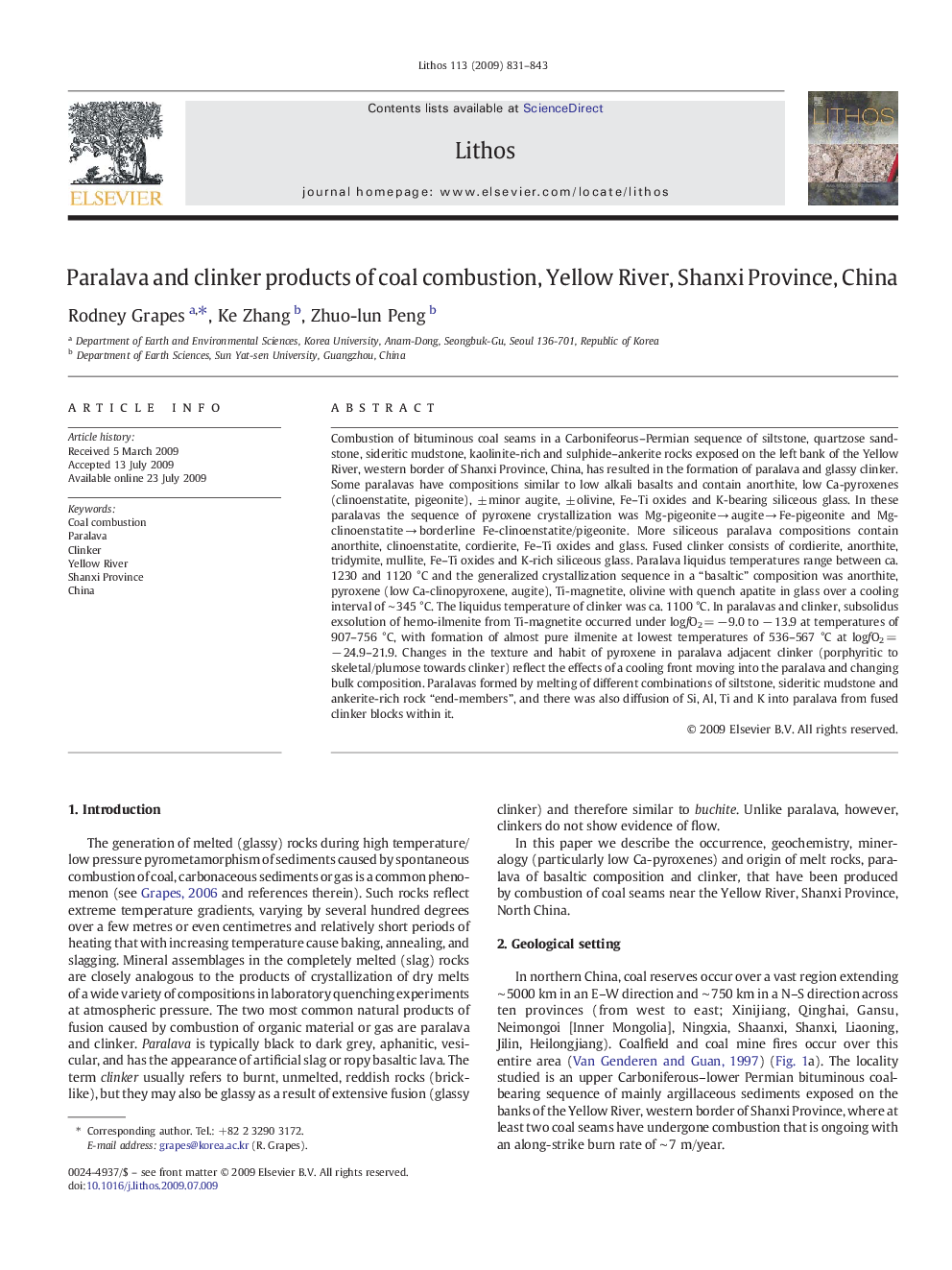| کد مقاله | کد نشریه | سال انتشار | مقاله انگلیسی | نسخه تمام متن |
|---|---|---|---|---|
| 4716967 | 1638738 | 2009 | 13 صفحه PDF | دانلود رایگان |

Combustion of bituminous coal seams in a Carbonifeorus–Permian sequence of siltstone, quartzose sandstone, sideritic mudstone, kaolinite-rich and sulphide–ankerite rocks exposed on the left bank of the Yellow River, western border of Shanxi Province, China, has resulted in the formation of paralava and glassy clinker. Some paralavas have compositions similar to low alkali basalts and contain anorthite, low Ca-pyroxenes (clinoenstatite, pigeonite), ± minor augite, ± olivine, Fe–Ti oxides and K-bearing siliceous glass. In these paralavas the sequence of pyroxene crystallization was Mg-pigeonite → augite → Fe-pigeonite and Mg-clinoenstatite → borderline Fe-clinoenstatite/pigeonite. More siliceous paralava compositions contain anorthite, clinoenstatite, cordierite, Fe–Ti oxides and glass. Fused clinker consists of cordierite, anorthite, tridymite, mullite, Fe–Ti oxides and K-rich siliceous glass. Paralava liquidus temperatures range between ca. 1230 and 1120 °C and the generalized crystallization sequence in a “basaltic” composition was anorthite, pyroxene (low Ca-clinopyroxene, augite), Ti-magnetite, olivine with quench apatite in glass over a cooling interval of ∼ 345 °C. The liquidus temperature of clinker was ca. 1100 °C. In paralavas and clinker, subsolidus exsolution of hemo-ilmenite from Ti-magnetite occurred under logfO2 = − 9.0 to − 13.9 at temperatures of 907–756 °C, with formation of almost pure ilmenite at lowest temperatures of 536–567 °C at logfO2 = − 24.9–21.9. Changes in the texture and habit of pyroxene in paralava adjacent clinker (porphyritic to skeletal/plumose towards clinker) reflect the effects of a cooling front moving into the paralava and changing bulk composition. Paralavas formed by melting of different combinations of siltstone, sideritic mudstone and ankerite-rich rock “end-members”, and there was also diffusion of Si, Al, Ti and K into paralava from fused clinker blocks within it.
Journal: Lithos - Volume 113, Issues 3–4, December 2009, Pages 831–843